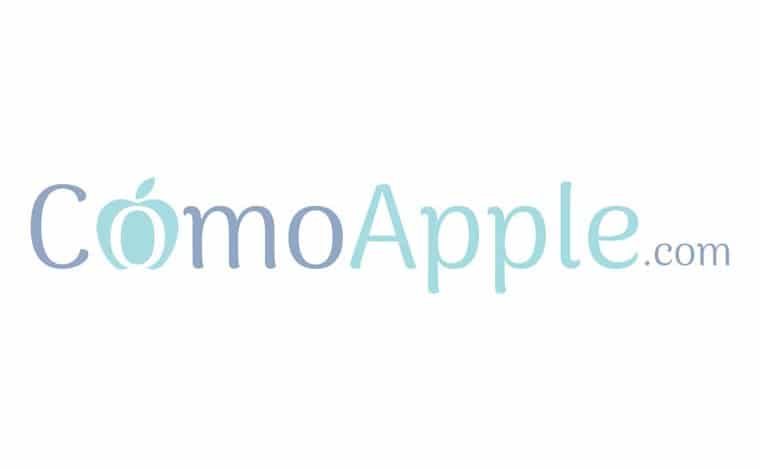
- Plug the USB drive into one of the MacBook Air’s USB ports.
- Click the Apple logo and select “Restart.”
- Click “Restart” to confirm you want to reboot your computer.
Likewise, how do I get my MacBook Air to boot from USB? Press and hold the “Option” key when you hear the startup sounds—this will bring you to the Startup Manager. Once the Startup Manager appears, you can release the Option key. Startup Manager will then start scanning your device for drives it can boot from, including your USB.
Beside the above, can you boot a Mac from a flash drive? Getting your Mac to load from a USB drive is fairly straightforward. Insert the USB boot media into an open USB slot. Press the Power button to turn on your Mac (or Restart your Mac if it’s already on). When you hear the startup chime, press and hold the Option key.
Furthermore, how do I get to the boot menu on a MacBook Air?
- Command (⌘)-R: Start up from the built-in macOS Recovery system.
- Option (⌥) or Alt: Start up to Startup Manager, which allows you to choose other available startup disks or volumes.
- Option-Command-P-R: Reset NVRAM or PRAM.
- Shift (⇧): Start up in safe mode.
- D:
Also the question is, how do I flash bios on MacBook air? To access your MacBook’s Open Firmware, you must first shut off your computer. Then turn it back on, holding down the “Command,” “Option,” “0” and “F” keys simultaneously as the machine boots to access the Open Firmware interface.
- Start or restart your Mac and immediately press and hold the option key on your keyboard.
- Release the option key when you see the Startup Manager window.
- Select a startup disk.
- Click the arrow or press Return on your keyboard.
How do I boot my Mac from USB using Windows keyboard?
How can I boot from USB?
- Alter the BIOS sequence on your PC so your USB device is first.
- Install the USB device on any USB port on your PC.
- Restart your PC.
- Watch for a “Press any key to boot from external device” message on your display.
- Your PC should boot from your USB drive.
How do I make my USB device bootable?
To create a bootable USB flash drive Insert a USB flash drive into a running computer. Open a Command Prompt window as an administrator. Type diskpart . In the new command line window that opens, to determine the USB flash drive number or drive letter, at the command prompt, type list disk , and then click ENTER.
How do I boot up without BIOS?
On the UnetbootIn page it suggest pressing F12 or Esc right after powering on should force an external boot.
How do I restore factory settings on my MacBook air?
Turn on your Mac and immediately press and hold these four keys together: Option, Command, P, and R. Release the keys after about 20 seconds. This clears user settings from memory and restores certain security features that might have been altered.
How do I fix a Mac startup problem?
- Restart your Mac in safe mode.
- Check your login items to learn if any of them are incompatible.
- Use the Disk Utility app on your Mac to repair your startup disk.
- Back up your disk, then reinstall macOS.
- Use macOS Recovery, part of the built-in recovery system of your Mac.
How do I reinstall OSX without disc?
Restart your Mac. Choose Apple menu > Shut Down, press and hold the power button until “Loading startup options” appears, select Options, click Continue, then follow the onscreen instructions. In the Recovery app window, select Reinstall for your macOS release, click Continue, then follow the onscreen instructions.
Does Mac use BIOS or UEFI?
Overview. Since 2006, Mac computers with an Intel-based CPU use an Intel firmware based on the Extensible Firmware Interface (EFI) Development Kit (EDK) version 1 or version 2. EDK2-based code conforms to the Unified Extensible Firmware Interface (UEFI) specification.
What is command option R on Mac?
Command-R restores the latest macOS that was installed on your Mac without upgrading to a later version. ● Option-Command-R upgrades to the latest macOS that is compatible with your Mac. ● Shift-Option-Command-R restores the macOS that came with your Mac or the version closest to it that is still available.
How do I access EFI on Mac?
MacBooks that use EFI provide a series of firmware commands that you can initiate at startup. To use these, you must press and hold specific keys when the Apple logo appears at startup. Commands include an Apple Hardware Test and a Safe Boot mode.
How do I reinstall my Mac startup disk?
Restart your Mac, and press Command + R, while it’s restarting. Select Disk Utility from the macOS Utilities menu. Once Disk Utility has loaded, choose the disk you wish to repair – the default name for your system partition is generally “Macintosh HD”, and choose ‘Repair Disk’.
What is startup disk on MacBook air?
The startup disk is the hard drive or SSD that holds the operating system for your Mac. For most people, this is the built-in drive on their Mac. And unless you set up an external drive, it’s probably also the place where all your other local files are stored.
What is command R on Windows keyboard?
Alternatively referred to as Cmd+R, Command+R is a keyboard shortcut most often used to refresh the page in an Internet browser.
What is the Command key on a non Apple keyboard?
When using a Windows keyboard on a Mac, the Windows key is used instead of the Command key, and the Alt key is used in place of the Option key.
How can I tell if my USB is bootable?
Check USB Drive Bootable Status from Disk Management Select the formatted drive (disk 1 in this example) and right-click to go to “Properties.” Navigate to the “Volumes” tab and check the “Partition style.” You should see it marked with some kind of boot flag, such as Master Boot Record (MBR) or GUID Partition Table.
How do you boot from USB if there is no option in BIOS?
- Restart the system into the BIOS.
- Ensure the Boot Mode is set to EFI (or UEFI). This is found in the Boot Options menu.
- Make sure that the USB Boot Priority is enabled.
- Save the changes and exit.
Which software is best for bootable USB?
- Rufus. RELATED: How to Create a Bootable Linux USB Flash Drive, the Easy Way.
- UNetbootin.
- Ubuntu Startup Disk Creator.
- Universal USB Installer.
- WiNToBootic.
- Windows Bootable Image (WBI) Creator.
- WinToFlash.
- XBoot.
Does not boot from USB?
USB not booting If the USB isn’t booting, you need to make sure: That the USB is bootable. That you can either select the USB from the Boot Device list or configure BIOS/UEFI to always boot from a USB drive and then from the hard disk.
What format does USB have to be to be bootable?
A: Most USB boot sticks are formatted as NTFS, which includes those created by the Microsoft Store Windows USB/DVD download tool. UEFI systems (such as Windows 8) can’t boot from an NTFS device, only FAT32. You can now boot your UEFI system and install Windows from this FAT32 USB drive.
Is SanDisk USB bootable?
Not only can you make SanDisk USB flash drive bootable, but also you can make any brand of USB drive bootable as long as it is big enough to hold your setup files.
How do I force my laptop to boot from USB?
- Press the Power button for your computer.
- During the initial startup screen, press ESC, F1, F2, F8 or F10.
- When you choose to enter BIOS Setup, the setup utility page will appear.
- Using the arrow keys on your keyboard, select the BOOT tab.
- Move USB to be first in the boot sequence.
Can OS run without BIOS?
Can your computer boot without BIOS? EXPLANATION: Because, without the BIOS, the computer will not start. BIOS is like the ‘basic OS’ which interconnects the basic components of the computer and allows it to boot up. Even after the main OS is loaded, it may still use the BIOS to talk to the main components.
Can a computer work without BIOS?
NO, without BIOS computer does not run. Bios is verify your device using POST(Power on self test) method. Also for install any OS on your system you must change it first boot device option which is programmed on BIOS.
Does Apple have a BIOS?
Opening BIOS In Mac Technically, Macbooks don’t come with BIOS, but they have a similar boot firmware called Open firmware or Extensible Firmware Interface. They serve the same purpose as BIOS. You should be extra careful while you are making changes to this interface.
What is EFI drive on Mac?
As you may already know, the EFI System Partition or ESP is a special partition on a Mac from which the initial system boot-time device drivers can be loaded and that was created as a BIOS replacement. This means that if there are issues with the EFI partition, then problems arise.
What is UEFI mode?
Unified Extensible Firmware Interface (UEFI) is a specification for a software program that connects a computer’s firmware to its operating system (OS). UEFI is expected to eventually replace basic input/output system (BIOS) but is compatible with it.
How do I boot from EFI?
You can boot from an EFI file by pressing the F9 key to launch the Boot Devices Options menu. All available boot options are listed on the Boot Option menu. Selecting Boot from EFI File presents a file explorer screen that lists all available file system mappings.
How do I explore the EFI partition?
- restart machine with Windows 8.1.
- determine “EFI System” partition with the Disk Management utility.
- run command prompt as administrator.
- type diskpart.
- type select disk 0 then select partition 2 then assign.
- open windows explorer windows+e.
- refresh if the drive is not showing F5.
What is EFI boot bootx64 EFI?
The efi/boot/bootx64. efi path is a special path for UEFI. Firmwares will always attempt to boot that path if no others are configured. This is useful for things like bootable USBs or devices without configurable firmware. That file could have been there from anything (windows or Linux).
How do I reinstall macOS without recovery mode?
Start up your Mac from a shut down state or restart it, then immediately hold down Command-R. The Mac should recognize that there’s no macOS Recovery partition installed, show a spinning globe. You should then be prompted to connect to a Wi-Fi network, and you enter a password.
